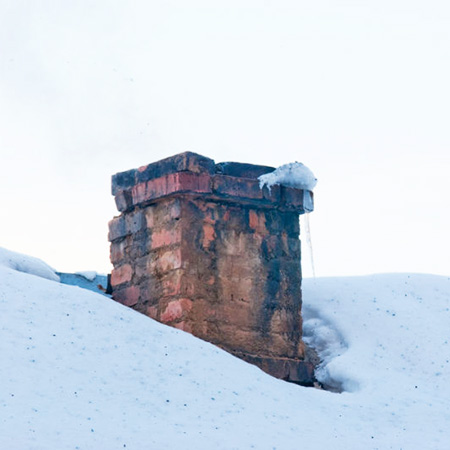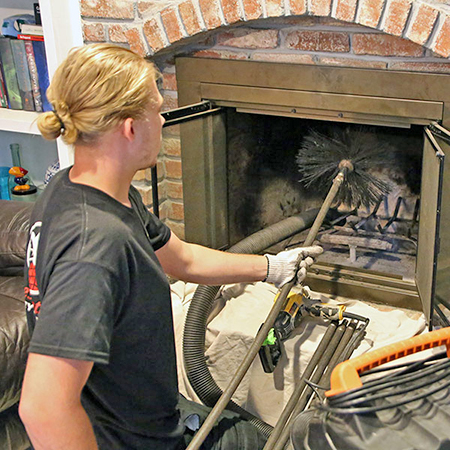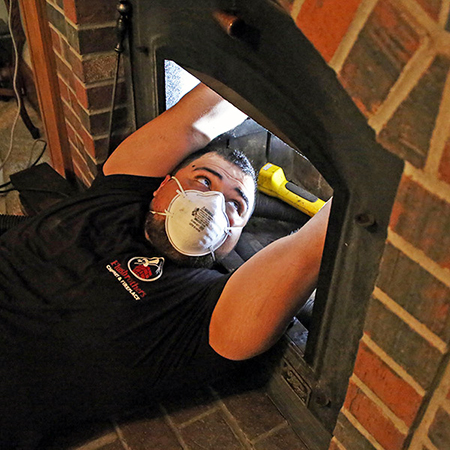4 Exterior Chimney Problems That You Shouldn’t Ignore
 While your chimney may appear to be in good condition, homeowners shouldn’t wait until they happen to notice a problem with the chimney. Many exterior chimney issues start gradually making it noticeable only upon closer inspection. Some problems commonly occur on or near the chimney crown and in other areas that may be hidden from view. Also, a few cracked or broken bricks may not seem dangerous, but a trained chimney professional knows that it can lead to health, safety, and structural issues. That’s why these four exterior chimney problems shouldn’t be ignored.
While your chimney may appear to be in good condition, homeowners shouldn’t wait until they happen to notice a problem with the chimney. Many exterior chimney issues start gradually making it noticeable only upon closer inspection. Some problems commonly occur on or near the chimney crown and in other areas that may be hidden from view. Also, a few cracked or broken bricks may not seem dangerous, but a trained chimney professional knows that it can lead to health, safety, and structural issues. That’s why these four exterior chimney problems shouldn’t be ignored.
Cracks in the chimney crown
Its location at the top of the chimney makes the chimney crown susceptible to weather-related damage. The purpose of the crown is to prevent water intrusion. And when cracks develop on the surface moisture can get inside the chimney. It can soften the interior masonry walls increasing the risk of fire and carbon monoxide poisoning and accelerate the deterioration of internal components.
Damaged chimney flashing
 The flashing is a thin metal strip that provides a waterproof seal along the seam where the chimney meets the roof. One sign of a problem with the flashing is noticing water leaks on the ceiling above your fireplace. It occurs when the flashing is stressed or damaged, allowing water to enter through the exposed seam. The moisture can cause quite a bit of damage to your roof and chimney, including mold and wood rot. It can also allow small pests like termites to get inside too.
The flashing is a thin metal strip that provides a waterproof seal along the seam where the chimney meets the roof. One sign of a problem with the flashing is noticing water leaks on the ceiling above your fireplace. It occurs when the flashing is stressed or damaged, allowing water to enter through the exposed seam. The moisture can cause quite a bit of damage to your roof and chimney, including mold and wood rot. It can also allow small pests like termites to get inside too.
Gaps in mortar joints
Gaps in the mortar joints are another common chimney problem that shouldn’t be ignored. The continued exposure of the brick masonry to the rain and the constant freeze-thaw process causes the mortar to crumble. As the mortar continues to disappear the bricks can become loose and eventually fall from the chimney. It can cause major structural issues if it is not repaired.
Spalled or missing bricks
In addition to gaps in the mortar joints, spalled or even missing bricks is another common problem. Like mortar, bricks are also porous, and it soaks moisture like a sponge. The pounding rain, snow, and sleet can cause tiny holes in the exterior brick surface. Moisture is absorbed in these small crevices. When the trapped moisture freezes, thaws and freezes again, ice crystals inside the crevices gradually expand, eventually causing the bricks to crack. Depending on the extent of the problem, you may notice pieces of brick lying on the ground. Like gaps in the mortar joints, spalling or missing bricks can also result in severe structural issues.
Chimney Repairs
An annual chimney inspection can spot these and other common chimney problems before they develop into more severe issues. Contact us to schedule your chimney inspection today. Our experienced masons can repair external chimney problems so that you can continue to enjoy the safe operation of your fireplace and heating stove.
This post first appeared on https://www.mychimney.com

 During the cold winter months, many homeowners are lighting up their fireplaces to stay warm while keeping their energy costs down. For many households, it’s as common as making a cup of coffee. But just like we feel the difference when temperatures fluctuate, these changing temperatures influence your chimney too.
During the cold winter months, many homeowners are lighting up their fireplaces to stay warm while keeping their energy costs down. For many households, it’s as common as making a cup of coffee. But just like we feel the difference when temperatures fluctuate, these changing temperatures influence your chimney too. When the temperature drops and gets very cold, especially below freezing, small animals like birds, squirrels, and other critters will see your chimney as an inviting place to escape the bad weather. Once inside, they become trapped and block the flue. These obstructions prevent toxic fumes from venting, forcing smoke and carbon monoxide into your home. Installing a chimney cap with a mesh screen will help prevent small animals and pests from getting into the flue.
When the temperature drops and gets very cold, especially below freezing, small animals like birds, squirrels, and other critters will see your chimney as an inviting place to escape the bad weather. Once inside, they become trapped and block the flue. These obstructions prevent toxic fumes from venting, forcing smoke and carbon monoxide into your home. Installing a chimney cap with a mesh screen will help prevent small animals and pests from getting into the flue. Scheduling an annual chimney inspection and cleaning is essential for keeping your home and family safe when using a fireplace or heating stove. The National Fire Protection Association, along with other fire safety experts, encourage all homeowners to have an annual chimney inspection and sweep. Even if you are no longer using the fireplace or chimney, an inspection is still recommended to maintain the structural integrity of the chimney and your home. But before you hire a chimney inspector or
Scheduling an annual chimney inspection and cleaning is essential for keeping your home and family safe when using a fireplace or heating stove. The National Fire Protection Association, along with other fire safety experts, encourage all homeowners to have an annual chimney inspection and sweep. Even if you are no longer using the fireplace or chimney, an inspection is still recommended to maintain the structural integrity of the chimney and your home. But before you hire a chimney inspector or  You will want to know if the service provider you hire will be performing a
You will want to know if the service provider you hire will be performing a

 A chimney flue is the narrow passageway in a chimney through which combustion byproducts travel from fires to the out-of-doors. The construction and operation of the entire chimney system should accommodate a proper draft so that smoke and toxic fumes exit through the flue as they are supposed to. When a new appliance is added, such as a fireplace insert, a new chimney liner may be required in order to ensure a proper draft. There is a standard formula that determines flue size and it encompasses measurements of fireplace and the proper ratio for a chimney flue.
A chimney flue is the narrow passageway in a chimney through which combustion byproducts travel from fires to the out-of-doors. The construction and operation of the entire chimney system should accommodate a proper draft so that smoke and toxic fumes exit through the flue as they are supposed to. When a new appliance is added, such as a fireplace insert, a new chimney liner may be required in order to ensure a proper draft. There is a standard formula that determines flue size and it encompasses measurements of fireplace and the proper ratio for a chimney flue. Most chimney professionals recommend stainless steel chimney liners because they typically don’t require replacement within a lifetime and many come with a lifetime warranty. Stainless steel chimney liners deemed safe for home use have been accepted by the Chimney Safety Institute of America (CSIA) as long as they are installed properly.
Most chimney professionals recommend stainless steel chimney liners because they typically don’t require replacement within a lifetime and many come with a lifetime warranty. Stainless steel chimney liners deemed safe for home use have been accepted by the Chimney Safety Institute of America (CSIA) as long as they are installed properly.